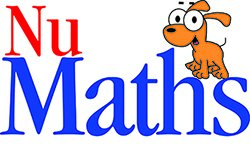|
Yellow level - Year 2
Whole Numbers
- numbers up to 100
- introduction to 3 digit numbers
- groups and multiples of 100
- place value (ordering numbers to 999)v
- patterns
-
- ordinal odd and even numbersv
- rounding to the nearest 10
- bridging 1 000
Addition
- chart 1- 100
- introduction to the word "add"
- number line addition (including number sentences)
- doubling of numbers up to 50
- review of addition of 2 digit with 1 digit - no carries (vertical format)
- addition of 2 digit numbers with 1 and 2 digit numbers (with carries)v
- mental addition strategies
Subtraction
- review of number lines
- revision of taking away groups
- consolidation of base 10 blocks
- relating addition to subtraction
- subtraction of 2 digits (regrouping and no regrouping)
- estimation techniques
- subtraction stories
- subtraction with 3 digit numbers
Multiplication,/
- introduction to formal multiplication
- recognizing groups/rows of
- rows (arrays for multiplication)
- using the "x" sign
- repeated addition
- vertical multiplication
- square numbers
- basic facts for (0 to 10)
- counting by 3
- assorted questions
- story problems
Division
- consolidation of the division concept
- equal shares
- recognizing a division situation
- exploring fractions (halves, thirds, quarters)
vstory problems
Fractions
- elementary treatment of the concept is given in division with the introduction and discussion of the basic fractions: 1/2, 1/3 and 1/4
elementary treatment of the concept is given in division with the introduction and discussion of the basic fractions: 1/2, 1/3 and 1/4
• formal concept development commences at Purple Level
Time and Money
- sequence of events: relational - first, next, last, etc
- sequence of events: positional - 1st to 29th, and first, second, beginning, end
- times of the Day: daytime, night time, morning, afternoon, beginning, end, etc
- days of the week and associated language (yesterday, today, tomorrow)
- durations: short, long, shorter, longer, shortest, longest, etc
- durations: hours, minutes, seconds, days, weeks, fortnight, years, time taken to perform a taskv
- representing time: difference between analogue and digital, half past and minutes past
- calendars: months, months in a year, ordinals to 31st , calendar construction, seasons, rhyme for number of days in the months
- write dates using correct abbreviations
- identification of money: 5c to $10; colour, shape, size, edge, animals, numbers
vdollars and cents: written form and total value
- shopping: multiple items and change given
Measurement
- concept of mass: heavy, light, same, heavier, lighter, heaviest,lightest
- conservation of mass and introduction to the kilogram
- concept of length: comparison of 2 and more objects - tall/short/long, (er/est), high/low (er/est)v
- comparison of 2 and more objects - wide/narrow (er/est), thick/thin (er/est), etc
- informal units of length, the metre, length, width, height, boundar = perimeter
- concept of area: elementary introduction to covering a surface
- concept of volume: introduction to volume, introduction to the litre, less than and more than
- concept of angles: turns and corners, right angles
Space
- identify and describe positions: positional (right/left, in/out, outside/inside, etc)
- identify and describe plane 2-D shapes: relational (same/different, big/little,smaller/est, whole/part/half, etc)
- identify and describe plane 2-D shapes: operational (the same, sort, fit, join together, match, cover, etc)
- identify and describe plane 2-D shapes: geometric (shape, flat, round/curved, surface, face, edge, straight, corner, side, point, etc)
- compare and classify plane shapes according to three attributes
- 5 sides or more - shape is labeled according to the number of sides
- quadrilaterals
- identify and describe 3-D shapes (solids): positional, relational, operational,geometric
- compare and classify 3-D shapes (solids) according to three attributes
- line: concept of the line and the use of the word "line"
- straight and curved lines, horizontal and vertical lines
- plumb lines for investigating vertical lines
- symmetry: exploration through plane shapes (classification: do fold, don't fold,fold lines, 3-D flip, slide, turn)
Chance and data
- one-to-one correspondence and more than enough
- graphs: 2 column - object, titles and axes, tally marks, scales
- introduction to graphs: 3 column - horizontal and vertical bar graphs, object,titles and axes, tally marks, scales
- introduction to graphs: 4 column - horizontal and vertical bar graphs, object, titles and axes, tally marks, scales
Back to Content homepage
|

